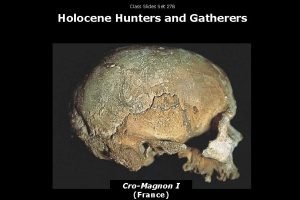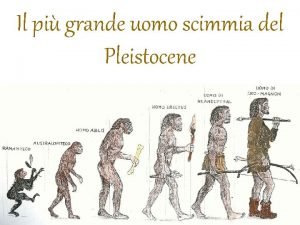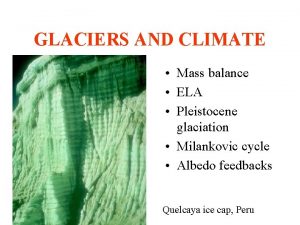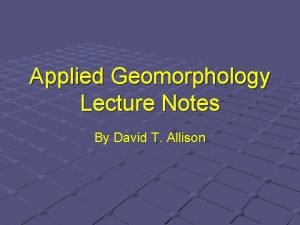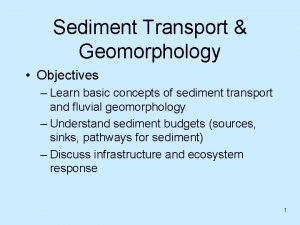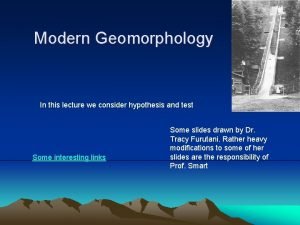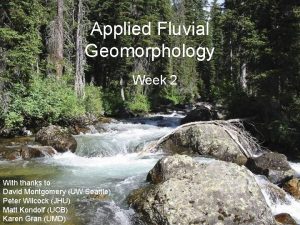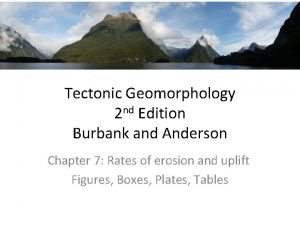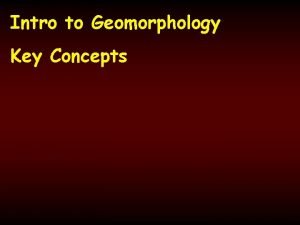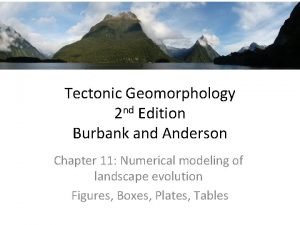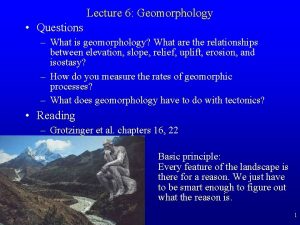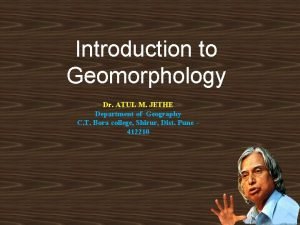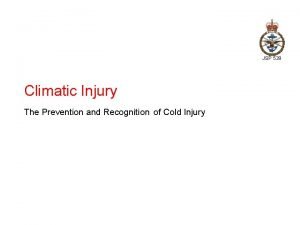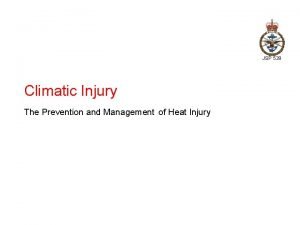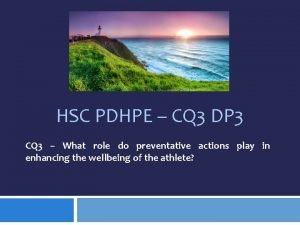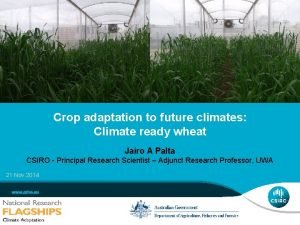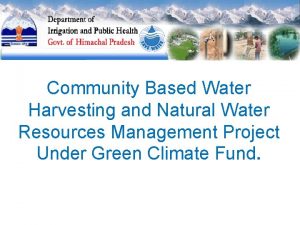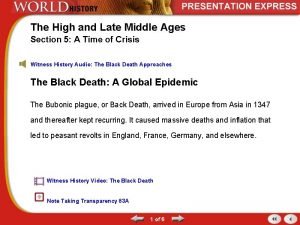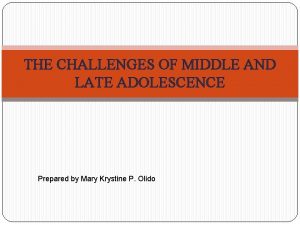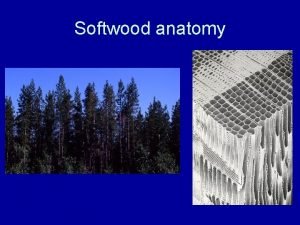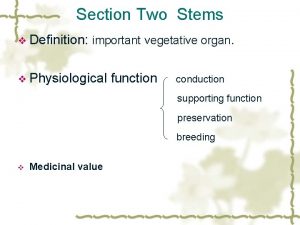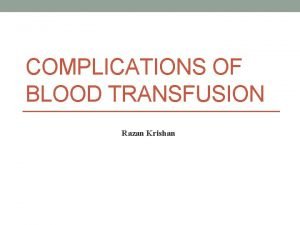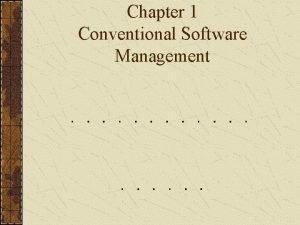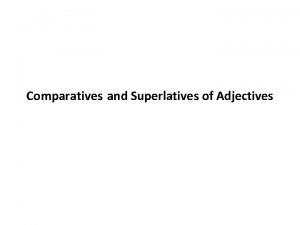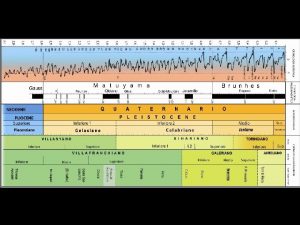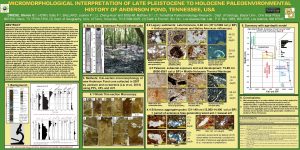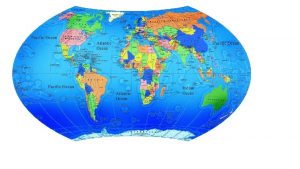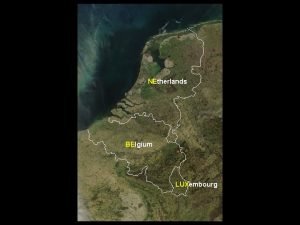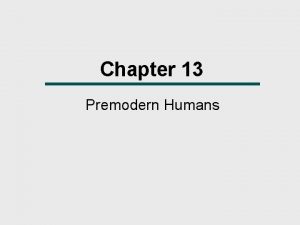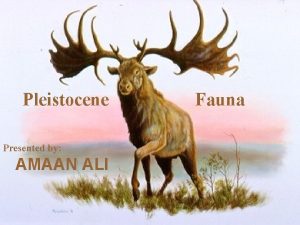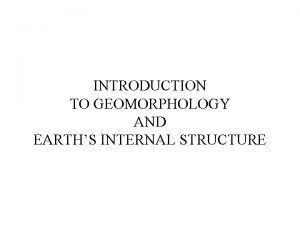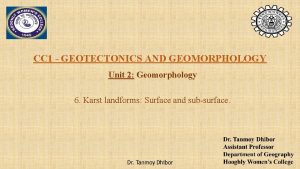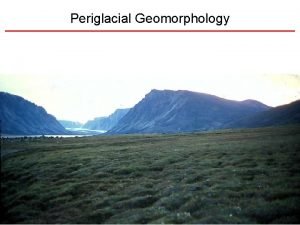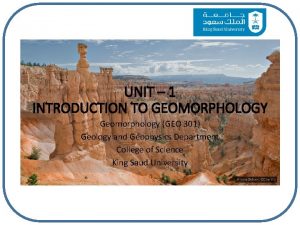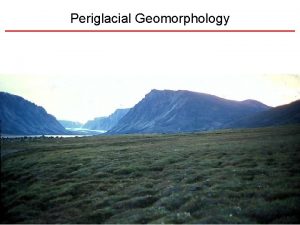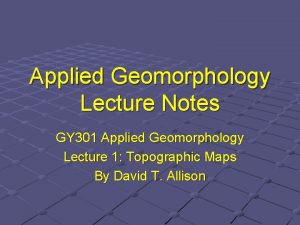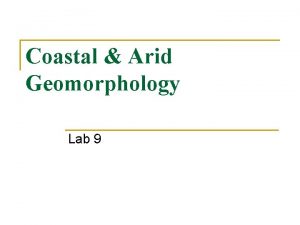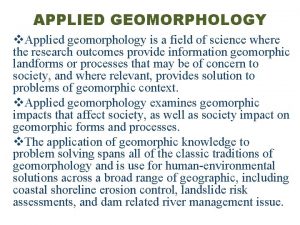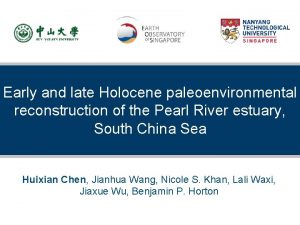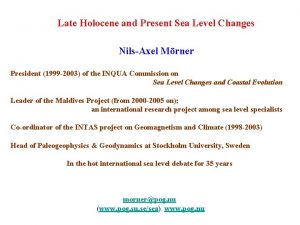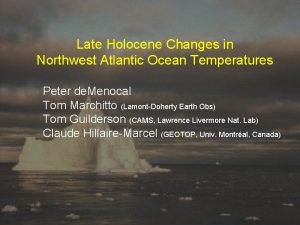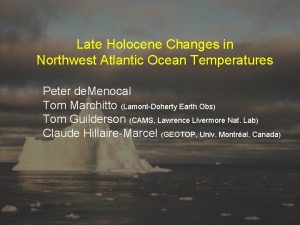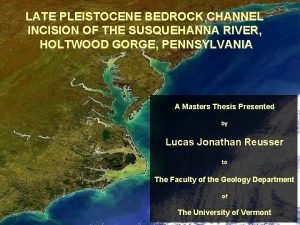Late Pleistocene and Holocene Climatic Geomorphology http www






































- Slides: 38

Late Pleistocene and Holocene Climatic Geomorphology http: //www. state. nj. us/dep/njgs/pricelst/ofmap/ofm 67. pdf

Past 150, 000 years Most Modern Surfaces A Useful Glossary

Wisconsinan Glacial 20, 000 ya Sea level Drops during Glacial Stages Continental Glaciers form on land Maximum glaciation occurs at coincidence of astronomical cycles if land in polar latitudes

Pleistocene Glaciation • The Pleistocene began about 1. 8 – 1. 6 mya and ended about 10, 000 years ago – several intervals of widespread glaciation took place, separated by warmer intervals

C-14 works here Glacial advances named for states most affected LATE Q Pleistocene Stages

Holocene Stages warmest

Oxygen in Greenland Vostok glacial ice and trapped air bubbles reveals the stable isotopes of Pleistocene to Recent snow. Uppermost warm in picture is the current interglacial, the Holocene

The Late Tertiary and Quaternary oxygen isotope record measured in marine fossil shells Evap. water and CO 2 during glacial time removes 16 O to glacier ice leaving 18 O in oceans for Ca. CO shell 3 cf Figure 4. 7 of Bloom

Global Temperatures Cycle, largest about 100, 000 Year (orbit eccentricity) Smaller signals about 25 K and Wisconsinan 41 K Illinoian Interglacials get really WARM and vary in duration

Lowered Sea-level exposed continental shelf Long Island Cape Cod Moraines

Carbon-14 Atoms split into smaller particles, among them neutrons Cosmic rays bombard atmospheric atoms Neutrons strike nitrogen atoms Nitrogen atoms lose a proton and becomes carbon-14 C-14 mixes with atmospheric oxygen to produce CO 2 C-14 absorbed by living organisms CO 2 taken up by plants CO 2 dissolved in water C-14 intake ceases when organism dies; C-14 concentration decreases as the radioactive isotope decays

Years of age 500 Tree Rings Annual-ring similarities show correlation Current year 50 Start with cores from living trees, overlap with buried or submerged fossil logs from the same region 400 150 200 Tree growth rings A B C D A Sediment layers with tree logs to be collected for dendrochronology B C D Buried tree logs

Lakes south of the glacier track its advance - NH Dating with Lake Varves Very little or no runoff Heavy runoff into lake Ice Summer Turbid water Summer layer (coarse, thick, and light-colored) Winter Clear water Winter layer (fine, thin, and dark-colored) Modern Lakes, just count back from present. Fossil pollen track climate.

Examples of fossil pollen

Hanneke Bos homepage Hanneke Bos Research

Northern Europe Iron age Bronze age Neolithic Mesolithic Paleolithic http: //en. wikipedia. org/wiki/Pollen_zone

For the rest of the lecture • The rest of Chapter 18 does a nice job of summarizing selected late Quaternary landforms around the world, and repeating topics we have already covered (e. g. pluvial lakes) • For the rest of this lecture, however, let's take a look at New Jersey • http: //www. state. nj. us/dep/njgs/pricelst/njgsmaps. htm provides downloadable surficial maps, good for finding glacial features

Sea Level Changes • Between glacial periods, sea level rose as ice sheets melted. • Shoreline and estuarine deposits were laid down as the Cape May Formation. • Most prominent terrace deposited 125, 000 years ago, when sea level was 20 feet higher. Slide modified from Scott Sandford

Most of the rest of the lecture will use slides from Kroll (2009) Geology of New Jersey, sometimes from NJGS sources. Used with permission. Plainfield Slide modified from Kroll 2009

The Eastern lobe of the Wisconsinan Glacier made and end run around the Watchungs and extended down to the vicinity of our campus Slide modified from Kroll 2009

These Moraines and the Watchungs trapped meltwater as the glaciers retreated’ forming proglacial lakes Slide modified from Kroll 2009 Basking Ridge Moraine Great Swamp

Slide from Kroll 2009

Slide modified from Kroll 2009 The lake breached the dams at, for example, Millington Gorge Basking Ridge Millington Gorge

After the raising of the lake's level, the lake cut outlet gorges at Millington and Moggy Hollow near Far Hills. As the glacier retreated further a lower more northerly exit was exposed around the north end of the Watchung range, forming the gorge of the Great Falls of the Passaic River in Paterson. http: //en. wikipedia. org/wiki/Great_Falls_of_the_Passaic_River

Various sedimentary deposits show the extent of the lake

Slide from Kroll 2009

Minimum Ice Thickness Slide modified from Kroll 2009 1400 ' High Point, NJ

Roche Moutonée Hamburg Slide modified from Kroll 2009

North-South Glacial Striations on the Roche Moutonée Slide modified from Kroll 2009

Slide from Kroll 2009

Note rounding and till beneath. Possibly carried further in outwash Slide from Kroll 2009

This glacial erratic is subangular above subangular drift

Drumlin near Oak Ridge, NJ Slide by Prof. Smart Slide by Prof.

Esker (ic) near Wantage http: //www. state. nj. us/dep/njgs/pricelst/gmseries/gms 85 -1. pdf Slide by Prof. Smart

Kettles, Convent Station Slide by Prof. Smart

Southern New Jersey shows Periglacial conditions


Chaotic deposits caused by yearly melting and refreezing of surface Bridgeton Formation sediments, near Hammonton, New Jersey, evidence of Periglacial conditions.
 Hunters slides
Hunters slides Personaggi il più grande uomo scimmia del pleistocene
Personaggi il più grande uomo scimmia del pleistocene Pleistocene glaciation
Pleistocene glaciation Applied geomorphology notes
Applied geomorphology notes Objectives of geomorphology
Objectives of geomorphology Hypothesis for geomorphology
Hypothesis for geomorphology Applied fluvial geomorphology
Applied fluvial geomorphology Tectonic
Tectonic Dynamic equilibrium in geomorphology
Dynamic equilibrium in geomorphology Geomorphology
Geomorphology Forces
Forces Application of geomorphology
Application of geomorphology Agro climatic zones in chhattisgarh
Agro climatic zones in chhattisgarh Climactic plot
Climactic plot Agroclimatic zones of chhattisgarh
Agroclimatic zones of chhattisgarh Climatic injuries
Climatic injuries Jsp539
Jsp539 Environmental considerations pdhpe
Environmental considerations pdhpe Chhattisgarh agro climatic zones
Chhattisgarh agro climatic zones Climatic
Climatic Agro climatic zones of himachal pradesh
Agro climatic zones of himachal pradesh Http //mbs.meb.gov.tr/ http //www.alantercihleri.com
Http //mbs.meb.gov.tr/ http //www.alantercihleri.com Siat ung sistem informasi akademik
Siat ung sistem informasi akademik The high and late middle ages section 5 quiz
The high and late middle ages section 5 quiz 3 filipino adolescent heroes
3 filipino adolescent heroes Cross field pits
Cross field pits Late childhood
Late childhood Roots method of vegetative propagation
Roots method of vegetative propagation Garden path sentence
Garden path sentence Cognitive development in middle and late childhood
Cognitive development in middle and late childhood Complications of blood transfusion
Complications of blood transfusion Conventional software
Conventional software Early and late complications of blood transfusion
Early and late complications of blood transfusion Principles of growth and development
Principles of growth and development Industrialists of the late 1800s used pools and trusts to
Industrialists of the late 1800s used pools and trusts to Industrialists of the late 1800s used pools and trusts to
Industrialists of the late 1800s used pools and trusts to Late development vs autism
Late development vs autism The romantic ideal
The romantic ideal Comparative form of new
Comparative form of new
